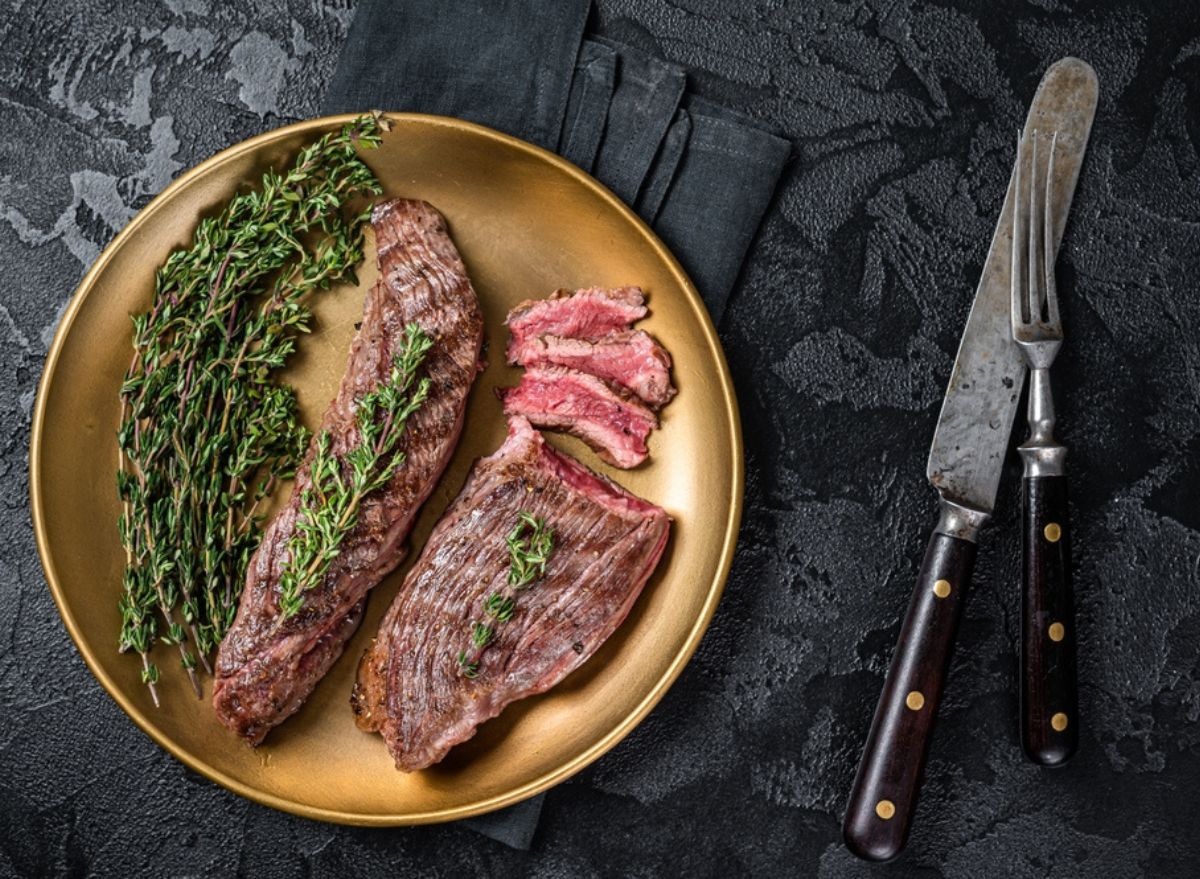Sometimes ordering steak can feel a bit tricky. While there’s nothing quite like a juicy, perfectly seasoned steak, putting in your order can feel more overwhelming than fun if you’re a steakhouse newbie (or just indecisive). There are so many different cuts; where does one begin? We asked a few chefs for their favorite cut of meat to order at a steakhouse, to make your choice easier.
The type of cut you order may be more important than you think. This is because each cut dictates a different fat amount, tenderness, flavor, and even cost. It’s essential to also remember that not all cuts are cooked the same way—thinner cuts may require less time on the grill or stovetop, whereas tougher or thicker cuts might need to be cooked a bit longer. This could all affect what and how you order.
Thankfully, we can help make your next steakhouse visit go much smoother—we asked chefs why they turn to their favorite cuts at steakhouses. From tasty bone-in ribeyes to lesser-known cuts, here’s exactly what the pros request (and why). Now you’ll know exactly what to get the next time you hit up your local restaurant or steakhouse for a steak.

Ken Irvine, executive chef and owner of Bleu Bohème in San Diego, recommends hanger steaks because they have “tremendous flavor,” even if it is a chewier cut. Hanger steaks, which are popular to order at restaurants, feature nice marbling and are often full of flavor. These cuts come from the cow’s diaphragm so they can be on the tougher side, but they have great flavor.
“A tender steak is too often equated to a great steak, but the tender cuts don’t have the same richness of flavor you can only get from fat,” says Irvine. “This is why I recommend ordering a hanger steak.”
Irvine often serves hanger steaks in his steak frites dish at Bleu Bohème. “We find that we just have to educate guests when they order it so they don’t complain that it is too chewy,” he adds.
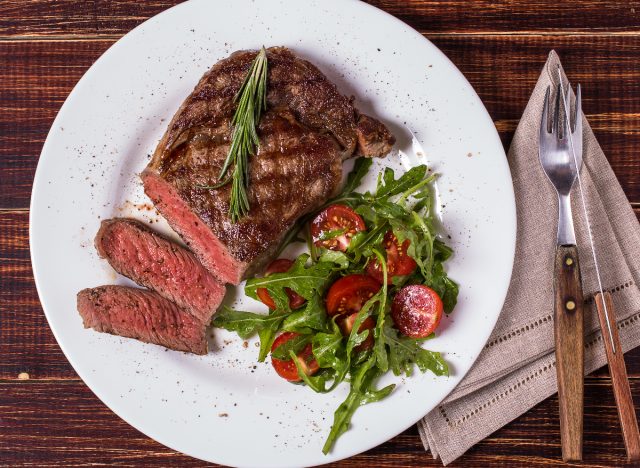
Another favorite cut among chefs is the ribeye. Diana Manalang, chef and owner of Little Chef Little Café of Little Cafe in New York City, likes this cut for its higher fat content. This cut is, you guessed it, taken from the cow’s ribs. Although tasty, this option often runs more expensive than other cuts.
“A ribeye has a higher fat content that gives the meat more flavor and doesn’t dry out as much as other cuts when you cook it, such as a filet which tends to be leaner,” says Manalang. “I also like the chew of a ribeye!”
Jasmine Golden, owner, chef, and food blogger at Golden Truffle is also a fan. “The cut comes from the rib section of the cow, which means that it has plenty of marbling throughout,” says Golden. “This marbling helps provide an intense level of flavor that you won’t find in other cuts like sirloin.”
Golden also shares that ribeye steaks are great for searing and grilling and are incredibly easy to customize. “Ribeyes also pair well with a variety of sides, making it the perfect steak for any occasion,” Golden adds.
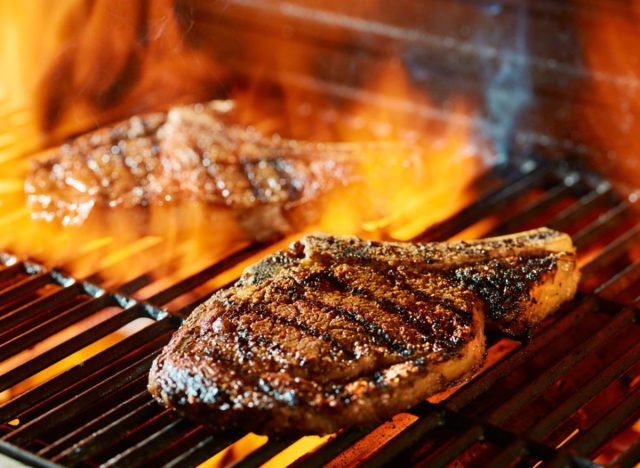
Virginia Willis, a chef and James Beard award-winning cookbook author, suggests the bone-in ribeye—dry-aged and prime, if possible. Bone-in ribeyes are one of the most tender, juiciest cuts of steak out there and are especially great for grilling.
“My first thought is that most chefs would not go out to order steak,” says Willis. “But, the reality is that sometimes things just taste better if cooked by someone else. And, if it’s a steakhouse, they very likely have a wood-burning fire—not as easy to replicate at home.”
Willis points out that bone-in ribeyes are nicely marbled with interior fat. “The fat melts during cooking and bathes the entire cut in rich, beefy goodness,” she shares.
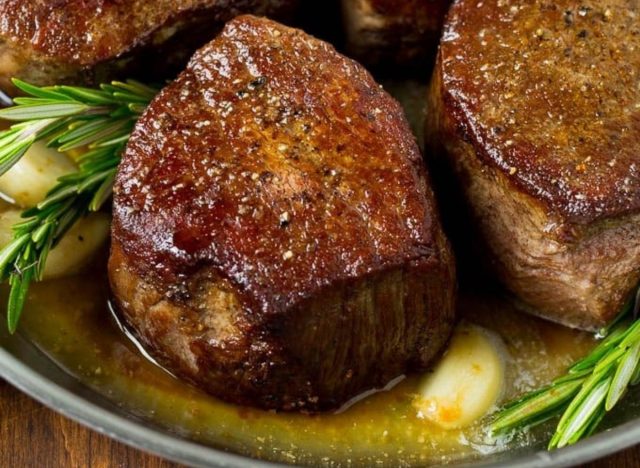
Chefs enjoy more tender cuts, such as filets, too. Filets are one of the most tender cuts of meat and melt like butter in your mouth while eating. “My favorite cut to order at a steakhouse is the beef tenderloin, better known as the filet,” says Robbie Shoults, celebrity chef and owner of the award-winning restaurant Bear Creek Smokehouse in Marshall, Texas.
Shoults prefers the filet because it’s leaner and is the most tender cut—this cut is taken from the shorter end of the tenderloin section of the cow. A popular way to cook a filet is seared with herbs and butter. “I love medium-rare with fresh horseradish sauce,” he adds. “It’s also my favorite cut to cook at home.”
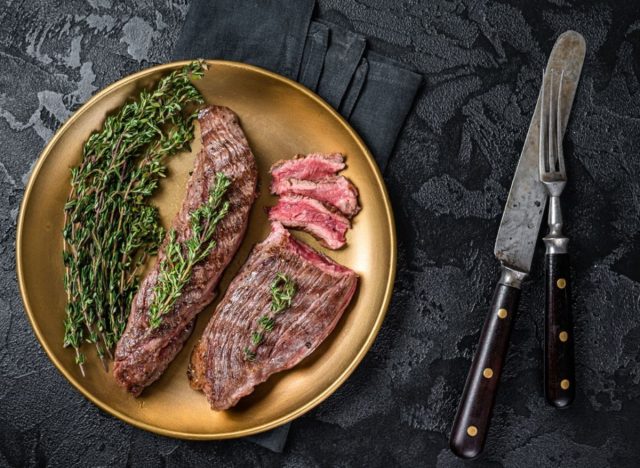
Willis also recommends bavette steak, which is also known as flank steak. Flank steak is taken from the abdominal muscles of the cow right near the sirloin. Dry rubs and marinades both work well on bavette steaks and this cut is great to use in sandwiches, too.
“This is definitely a restaurant-only cut with a similar profile to skirt steak,” says Miller. “It’s super meaty and flavor and was once called a ‘butcher’s cut’ because the butcher would keep it.”
